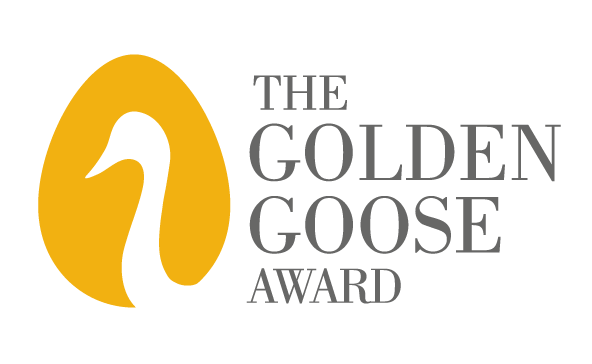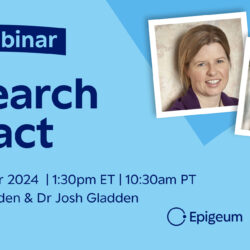Matt Owens on Obscure Research That Makes a Big Impact
This article originally appeared as part of the SAGE Connection blog’s “Connecting with the Community” series. SAGE, which is the parent of Social Science Space, is also a sponsor of the Golden Goose Award.
- A study about marshmallows leads to breakthrough research about child development and delayed gratification.
- A study on rat massage helps premature babies thrive
- A study on why jellyfish glow green helps to better understand cancer and brain diseases
These statements represent the findings of three of the now 11 Golden Goose Award recipients. The awards are given out to seemingly obscure, federally funded research that has led to major breakthroughs in science and a major, positive human impact. They were created as a response to Senator William Proxmire’s “Golden Fleece Awards” (given out from 1975-1988), which targeted federal spending that Proxmire considered wasteful because the research it funded sounded odd or obscure. The Fleece awards often ridiculed research that may not have made sense to the general public at the time, but turned out to be important for society later on.
Interested in finding out the impact that the Goose awards have had since their launch in 2012, I had a chat with Matt Owens, vice president for federal relations and administration at the Association of American Universities (a Goose Award founding organization) and member of the Golden Goose Award Steering Committee. Read what he had to say below.
The program has been around for a few years now. Is it making any difference?
Yes, the difference is evident in the examples policymakers cite when arguing the need to support federal investments in scientific research at NIH, NSF, DOD, and the other federal agencies. I have had this happen to me a few times over the past few years. The most recent time was this spring when I was in a meeting about biomedical research funding with a key congressional staffer who agreed with me that federal investments are needed and then, unprompted, she told me about a couple of scientists who made an important discovery in Yellowstone Park’s hot springs that led to advances in medicine. Of course, she was talking about GGA recipients Thomas Brock and Hudson Freeze and their discovery of thermus aquaticus, a heat-loving bacterium that made possible biotechnology as we know it today. The very fact that she cited this GGA example as justification for federal investments in biomedical research illustrates one way the award is making a difference – it is contributing to how policy makers think about federal research investments.
What has been the most surprising outcome of the effort?
Perhaps it shouldn’t be surprising, but what amazes me is the personal responses so many researchers have to the GGA. Time and time again, when we notify awardees or talk with researchers about the award, they mention their deep frustration and disappointment with the “Golden Fleece Awards” with which Senator Proxmire sometimes targeted research projects. They talk about how damaging this was to the public trust in science and about their deep appreciation for how the Golden Goose Award makes the point that just because a research project may sound funny or odd, it doesn’t mean it isn’t valuable.
What Goose award winner do you personally cite when explaining this to friends and family?
Great question! Before last year’s award ceremony I usually cited most, if not all, all of the  awardees. But since then, I usually start by talking about the work of Drs. Field, Evoniuk, Kuhn, and Schanberg involving rat and infant massage. People connect instantly to the story of this research, which involved massaging baby rats and led to massage therapy that has improved and saved the lives of premature infants around the world. I have now met several parents of premature babies, and they have told me how they would massage their new born babies, who are now thriving children. People grasp why this work merited federal funding, even if it sounds frivolous at first. Be it a family member, friend, congressional staff, or anyone else, I find that once I talk about this GGA winner, the people I am talking to want to hear about other awardees, and I am delighted to tell them more.
awardees. But since then, I usually start by talking about the work of Drs. Field, Evoniuk, Kuhn, and Schanberg involving rat and infant massage. People connect instantly to the story of this research, which involved massaging baby rats and led to massage therapy that has improved and saved the lives of premature infants around the world. I have now met several parents of premature babies, and they have told me how they would massage their new born babies, who are now thriving children. People grasp why this work merited federal funding, even if it sounds frivolous at first. Be it a family member, friend, congressional staff, or anyone else, I find that once I talk about this GGA winner, the people I am talking to want to hear about other awardees, and I am delighted to tell them more.
The GGA is a bipartisan effort, but much of the criticism of odd-sounding research these days comes from Republicans. Do you have a special Republican-oriented message?
Very simply, we don’t. The Golden Goose Award “message” is the same for Republicans and Democrats: Don’t judge a book by its cover – federal funding for odd or frivolous sounding research pays enormous societal, health, security, and economic dividends to the American taxpayer. The GGA honors and tells the stories that illustrate this message, and regardless of political party we have seen this resonate with members of Congress. This is evident from the bipartisan support the GGA enjoys from Members of Congress who endorse it, including: Rep. Jim Cooper (D-TN), Rep. Charlie Dent (R-PA), Rep. Bob Dold (R-IL), Rep. Donna Edwards (D-MD), Rep. Randy Hultgren (R-IL), and Senator Chris Coons (D-DE).
Have you had any negative feedback from groups or individuals who challenge federal funding of research?
I have not encountered any negative reactions to the award. The only negativity I’ve heard is along the lines of: “just because a few odd or funny sounding research projects were successful, it doesn’t mean there are not a lot more that weren’t.” My answer to that is as more Golden Goose Awards are given and the stories behind the awards are told, then I think there will be fewer and fewer people who will criticize federally funded research projects that sound peculiar.
What positive feedback have you received from the academy or researchers who aren’t being honored?
Tremendous gratitude is the best way to summarize the feedback that my colleagues and I on the GGA Steering Committee receive regularly from researchers. As I mentioned previously, researchers who know the Golden Goose Award often connect to it in a personal way – and usually through an expression of appreciation and gratitude. You have to give credit where credit is due. Rep. Cooper saw the need, and he conceived of the GGA. The founding organizations and sponsors of the award – like SAGE – have taken that idea and fulfilled that need by making it a reality.























































































